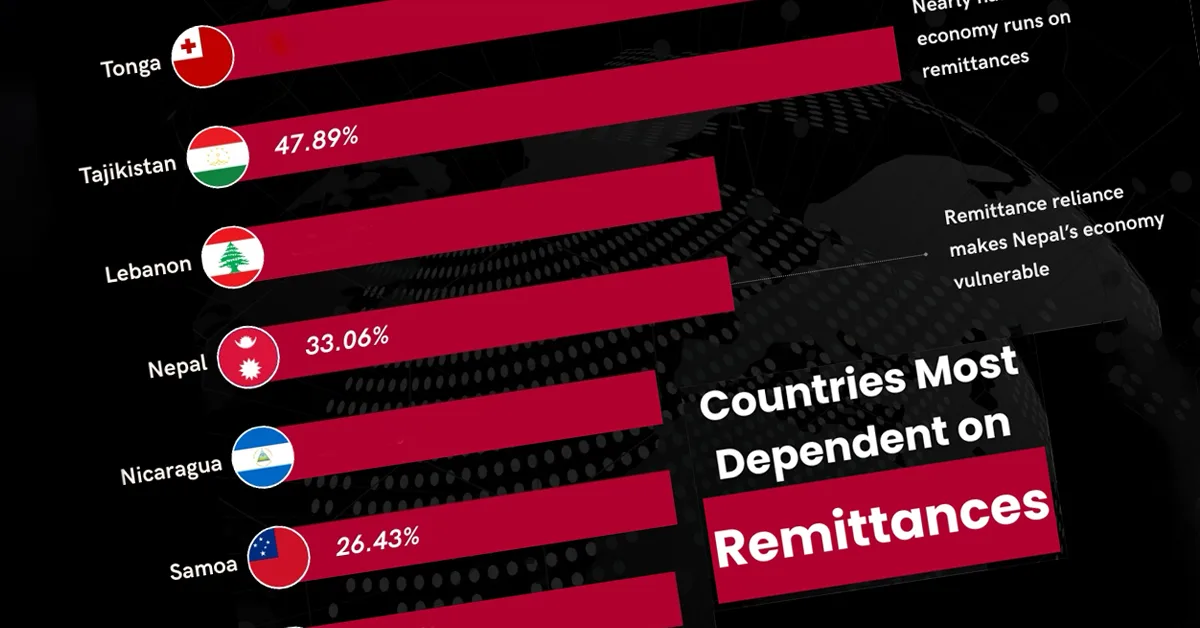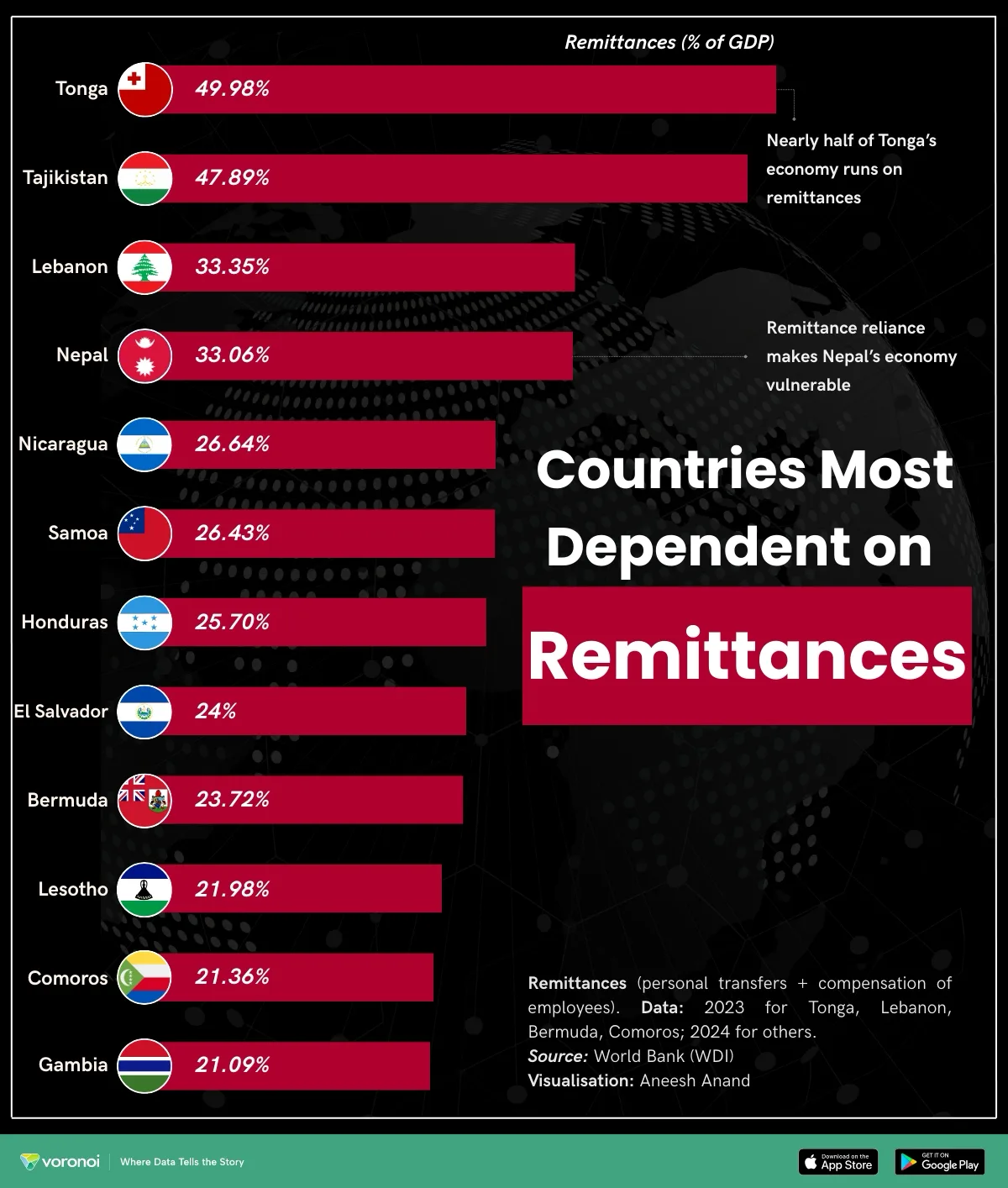 See this visualization first on the Voronoi app.
See this visualization first on the Voronoi app.
Which Economies are Most Dependent on Remittances?
This was originally posted on our Voronoi app. Download the app for free on iOS or Android and discover incredible data-driven charts from a variety of trusted sources.
- In Tonga and Tajikistan, nearly half of national GDP comes from citizens working abroad.
- Nepal’s foreign job migration boom could soon make it the world’s most remittance-dependent economy, surpassing Tonga.
- Remittances have slashed poverty rates in countries like Tajikistan, but also reveal economic fragility and limited domestic opportunity.
Money sent home by citizens working abroad is a lifeline for millions of families and a critical economic pillar for several countries.
According to the World Bank, remittances include personal transfers and compensation of employees. The chart above, created by Aneesh Anand, ranks countries by how much of their GDP comes from these international money flows.
Here’s a look at the most remittance-reliant economies:
| Rank | Country | Remittances (% of GDP, 2023/24) |
|---|---|---|
| 1 |  Tonga Tonga |
49.98 |
| 2 |  Tajikistan Tajikistan |
47.89 |
| 3 |  Lebanon Lebanon |
33.35 |
| 4 |  Nepal Nepal |
33.06 |
| 5 |  Nicaragua Nicaragua |
26.64 |
| 6 |  Samoa Samoa |
26.43 |
| 7 |  Honduras Honduras |
25.70 |
| 8 |  El Salvador El Salvador |
24.00 |
| 9 |  Bermuda Bermuda |
23.72 |
| 10 |  Lesotho Lesotho |
21.98 |
| 11 |  Comoros Comoros |
21.36 |
| 12 |  The Gambia The Gambia |
21.09 |
Tonga stands out with remittances accounting for nearly half of its GDP. Tajikistan is close behind, with Lebanon and Nepal also seeing one-third of their GDP come from foreign income.
Why Remittances Matter So Much
For countries like Tajikistan, where poverty rates remain high and domestic job opportunities are scarce, remittances are more than just economic support, they’re a stabilizing force. In fact, over one million Tajiks work abroad, mainly in Russia, and the funds they send home pay for essentials such as food, healthcare, and education. These financial inflows have helped reduce poverty rates in the country by up to 16%.
Globally, remittances are one of the most direct ways to transfer wealth from developed to developing nations. The International Fund for Agricultural Development (IFAD) highlights 15 reasons why remittances are essential, including promoting financial inclusion and reducing reliance on aid.
Nepal’s Surging Remittance Economy
Nepal currently ranks fourth on the list with 33% of GDP tied to remittances, but that number is expected to climb. Recent government restrictions on social media and ongoing political instability have pushed more citizens to seek work abroad. A record 500,000 permits for foreign employment were issued in just one year.
The remittance paradox in Nepal, economic modernization fueled by labor export, means the country may soon surpass Tonga in remittance dependency, raising questions about long-term economic sustainability and domestic employment.
The Cost of Sending Money
While remittances are vital, the cost of sending money remains a challenge. According to our earlier post on countries with the highest remittance costs, fees can be as high as 10%, diminishing the impact of these transfers. Reducing these costs is key to maximizing remittances’ benefits for the world’s most vulnerable economies.
Learn More on the Voronoi App 
Check out the full breakdown in The Global Remittance Market to see how trends in money transfers are evolving worldwide.
- Source: https://www.visualcapitalist.com/cp/chart-which-country-economies-are-most-dependent-on-remittances/
















